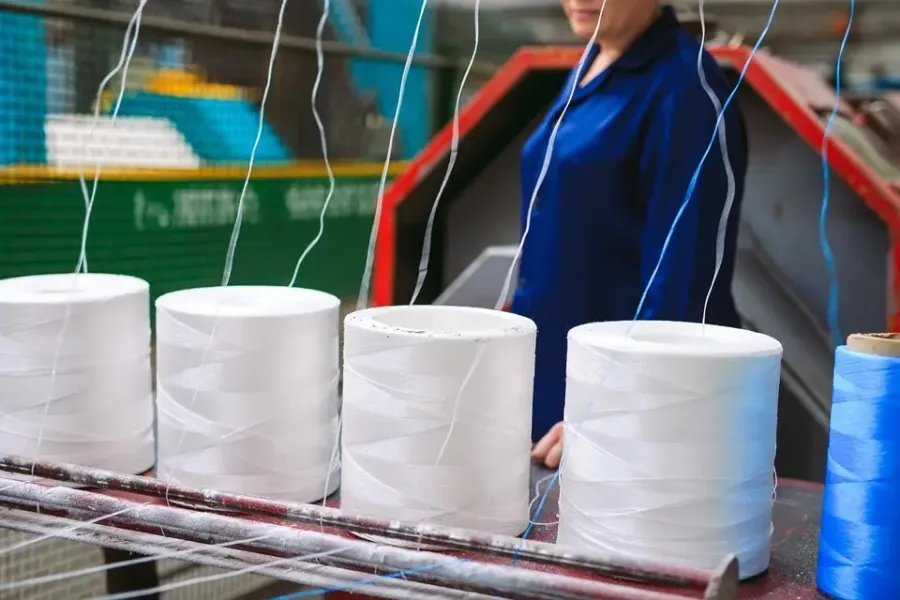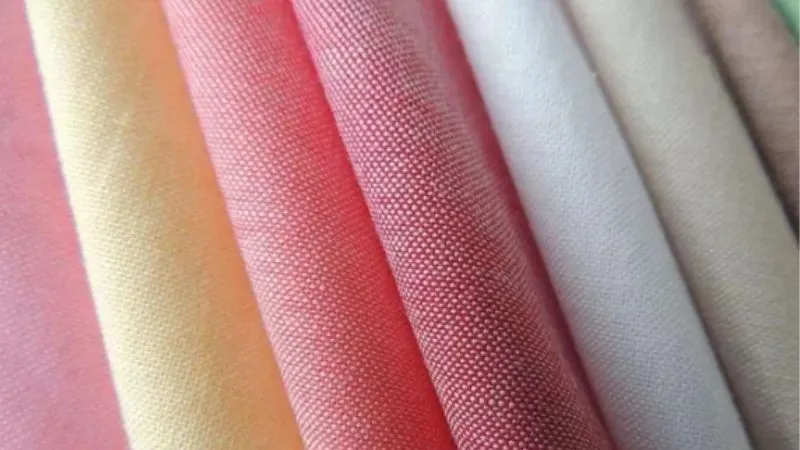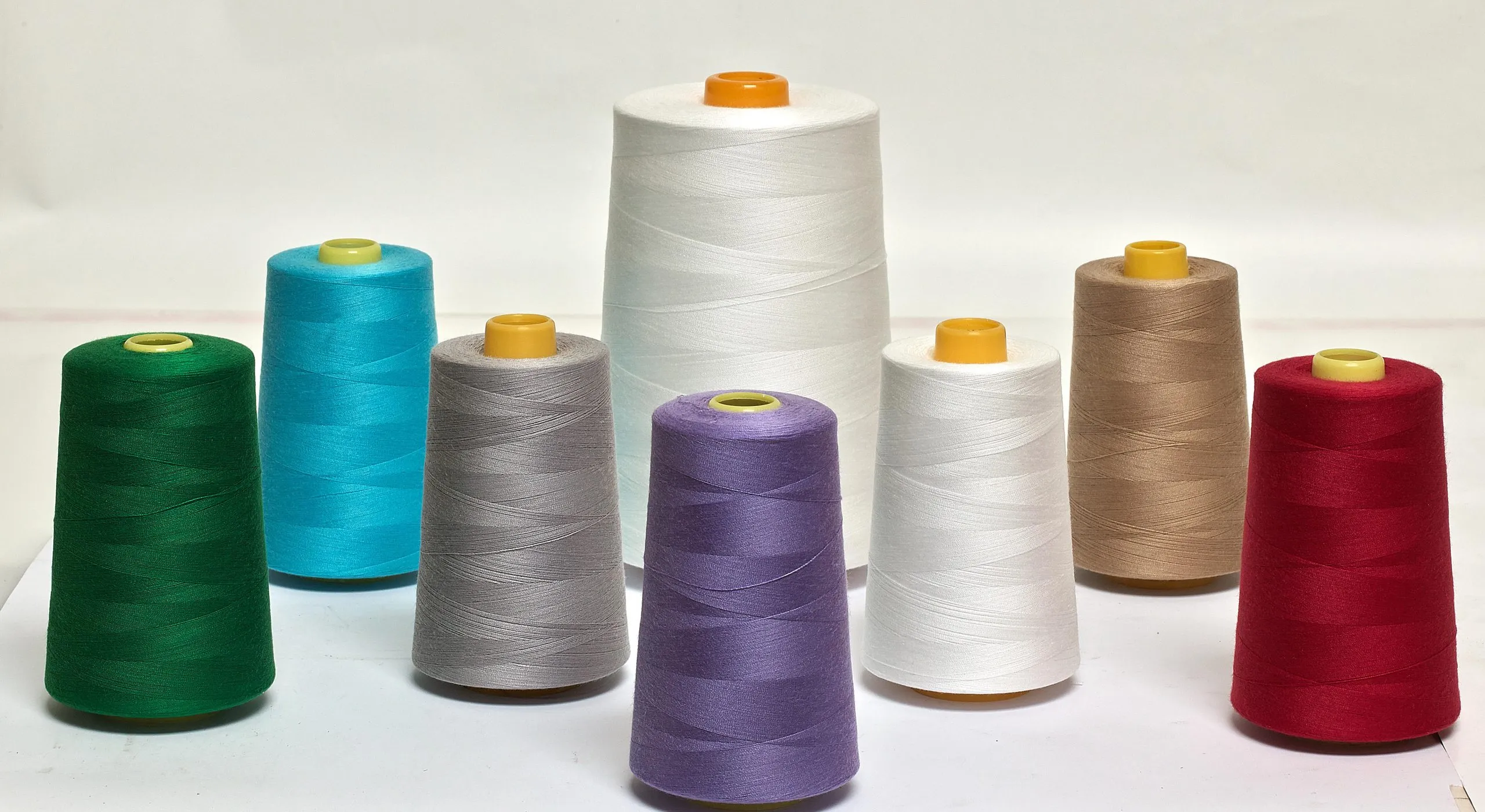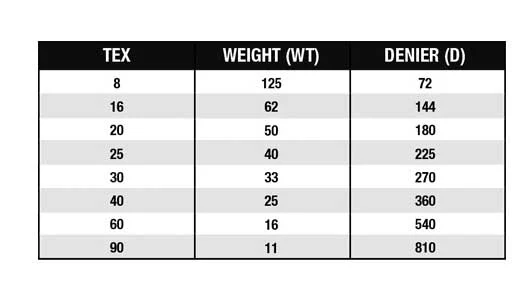
Polyamide fabric is one of those materials you see every day but rarely think about. It’s in yoga pants, stockings, swimwear, backpacks, and even firefighter suits… Strong, stretchy, and surprisingly versatile, polyamide has shaped both fashion and industrial textiles for nearly a century. To understand why it’s so widely used, you need to know what it is, how it’s produced, and how it behaves in real life. This guide walks you through everything—from its science and production to comfort, performance, and sustainability.
What Is Polyamide Fabric?
Polyamide fabric is a textile made from polyamide polymers, a group of materials linked by amide bonds. The best-known polyamide is nylon, invented by DuPont in the 1930s. Nylon was first created as a replacement for silk stockings, but it soon became a global textile powerhouse. Although natural fibres like silk and wool are technically polyamides in the chemistry world, the term “polyamide fabric” in the modern textile industry almost always refers to synthetic polyamides such as: Nylon 6, Nylon 6,6, High-performance aramids (Kevlar®, Nomex®) Today, polyamide remains valued for its stretch, strength, and smooth feel, which explains its presence in blended fabrics and performance materials.

| Nylon 6 | Good elasticity, dyeability; used in swimwear, hosiery, backpacks. |
| Nylon 6,6 | Higher crystallinity and abrasion resistance; used in industrial fabrics, ropes. |
| Nylon 11 / 12 | Lower moisture uptake and better chemical resistance; used in tubing, automotive parts. |
| Aramids (Kevlar®, Nomex®) | Outstanding thermal and tensile performance; used in ballistic vests, firefighting suits. |
| Elastomeric polyamides | High stretch and recovery; used in performance leggings, compression garments. |
Key Properties of Polyamide Fabric
Here is how polyamide behaves, according to textile labs and Sewport’s data:
- High Stretchability: Polyamide has natural elasticity, giving fabrics a flexible, body-hugging feel. This is why it appears in leggings, stockings, swimwear, and yoga pants.
- Smooth, Silky Hand-Feel: PA fibres are naturally round and smooth, creating a soft, sleek surface similar to silk.
- Strong and Durable: Polyamide is one of the strongest man-made fibres. Nylon was famously used for parachutes and military gear in WWII.
- Medium Heat Retention: It holds warmth better than cotton but less than wool. That balance makes it useful in sportswear and daily wear.
- Medium Moisture Wicking: Polyamide absorbs little moisture. It dries fast and feels cool against the skin.
- High Pilling Risk: The smooth fibres can rub against each other and produce small “bubbles” or pills over time.
- Low Breathability: Polyamide traps heat more than cotton or viscose, especially in humid climates.

How Is Polyamide Fabric Made?
Behind every polyamide fabric is a detailed production process that starts with simple chemical building blocks and ends with strong, flexible fibers. Understanding how polyamide is made helps explain why it performs so well. This section breaks the process down into clear, easy steps. Polyamide production is a chemical and mechanical process. Here’s the full journey:
- Step 1: Raw Materials – Most synthetic polyamides start from crude oil. From petroleum, producers extract chemicals such as: Hexamethylenediamine, Adipic acid… These form nylon 6,6. Nylon 6 is made from caprolactam.
- Step 2: Polymerization – The chemicals react to create long chains called polyamides. These chains give the fibre its strength and stretch.
- Step 3: Melting and Extrusion – The molten polymer is pushed through a spinneret—a metal plate with tiny holes—to create thin filaments.
- Step 4: Cooling with Water – The filaments drop into a cooling bath. This step uses large amounts of water, which has environmental implications.
- Step 5: Drawing (Stretching) – The fibres are pulled and stretched. Drawing aligns the molecules inside the fibre, improving: Strength, Elasticity, Smoothness
- Step 6: Spinning / Knitting / Weaving – Finally, the fibres become yarn and then fabric.

Common Blends
Polyamide is rarely used alone. Blends include:
- PA + Elastane → leggings, yoga pants, shapewear
- PA + Polyester → durable sportswear
- PA + Cotton → stronger, smoother casual wear
Blends usually contain 10–25% polyamide to improve comfort and durability.
How Does Polyamide Feel on the Skin?
The way a fabric feels is one of the biggest factors that influence comfort. Polyamide has a smooth, silky touch and stretches easily with the body. In this section, you’ll learn how polyamide feels when worn, and why people choose it for activewear, swimwear, and everyday clothing. People love polyamide for the way it feels:
- Smooth and Silky: Nylon was invented as fake silk—its texture still reflects that.
- Stretchy and Supportive: It follows the body’s movement easily.
- Lightweight: Fabrics feel soft and thin but remain strong.
- Cool to the Touch: Polyamide releases moisture quickly, making it feel cool.
Limitations in Comfort
- Not very breathable
- Can feel warm in hot climates
- May create static electricity
This is why many brands mix polyamide with cotton, viscose, or elastane.
What Is Polyamide Fabric Used For?
From leggings and swimwear to ropes and backpacks, polyamide shows up almost everywhere. Its versatility allows it to shift easily between fashion, sports, and technical applications. This section explores the many places where you’ll find polyamide in daily life. Polyamide appears almost everywhere, from fashion to heavy industry.
- Fashion & Clothing: Yoga pants, Tights & stockings, Swimwear, Underwear, Sportswear, Windbreakers, Lining fabrics, Shapewear, Leggings, Socks
- Outdoor & Technical Uses: Backpacks, Tent fabrics, Umbrellas, Parachutes, Ropes & fishing nets
- Industrial Uses: Car parts, Toothbrush bristles, Firefighting suits (Nomex®), Bulletproof vests (Kevlar®), Packaging and cable insulation

This is the “why it’s everywhere” part—polyamide adapts to everything from soft clothing to high-heat industrial safety products.
Why Polyamide Is Everywhere
Polyamide began in the United States, but today it’s produced mainly in Asia, where large-scale manufacturing makes the fiber widely accessible. This section looks at the major production regions and how global supply has changed over time.
- It’s Affordable: Nylon was once more expensive than silk. Today, it’s one of the most cost-effective fibres.
- It Works in Almost Any Application: From underwear to firefighter jackets.
- Stretch + Smoothness = Comfort: Perfect for leggings, hosiery, and sportswear.
- Blends Beautifully: PA boosts strength and stretch in blended fabrics.
- Consistency: Manufacturers love its predictable, repeatable performance.

Polyamide (Nylon) vs Cotton vs Polyester: Comparison Table
| Feature | Polyamide (Nylon) | Cotton | Polyester |
|---|---|---|---|
| Stretch | High | Low | Medium |
| Strength | Very high | Medium | High |
| Breathability | Low | High | Medium |
| Moisture Wicking | Medium | Low | Medium |
| Drying Speed | Fast | Slow | Fast |
| Feel | Smooth, silky | Soft, natural | Slightly coarse |
| Sustainability | Low | Medium (depends on farming) | Low–medium |
Final Takeaway / Conclusion
Polyamide fabric has stayed popular for one simple reason: it works. It’s strong, smooth, stretchy, and quick drying, making it useful for everything from everyday clothing to high-performance gear. While it’s not perfect especially in breathability and sustainability new recycled versions are helping reduce its impact. In the end, polyamide remains a reliable, versatile fiber that continues to shape how we dress, move, and live each day.
FAQs Polyamide Fabric How It Works, What It Feels Like, and Where You See It Daily
In short, What is Polyamide (PA)?
Polyamide, often shortened to PA, is a group of synthetic fibers made from long chains of molecules connected by amide bonds. In the fashion and textile world, PA usually refers to nylon, one of the most widely used man-made fibers today. It is known for being light, smooth, strong, and naturally stretchy. Because of these qualities, polyamide is used everywhere from yoga leggings and swimwear to backpacks, ropes, and industrial safety gear.
Is PA the same as Nylon?
Yes. In everyday textile usage, Polyamide = Nylon. The difference is mainly in naming: “Polyamide” is the scientific name. “Nylon” is the commercial/trade name created by DuPont. Codes like PA 6 and PA 6.6 represent different types of nylon made from different chemical processes. They behave similarly, so most people simply call them “nylon.”
Is Polyamide breathable?
Not very. Polyamide has low breathability, which means air does not pass easily through the fibers. This can make the fabric feel a bit warm or less airy compared to cotton or viscose. However, PA dries very fast, which helps reduce the discomfort of sweat. That’s why it is still used a lot in sportswear and swimwear where quick-drying ability matters more than breathability.
Does Polyamide feel hot when worn?
It can. Because PA traps heat more easily, wearing 100% polyamide garments in tropical or humid climates may feel a bit warm. The good news is that when PA is blended with cotton, viscose, or elastane, the comfort level improves a lot. These blends balance stretch, smoothness, and breathability, making them easier to wear in hot weather.
Is Polyamide good at absorbing sweat?
Polyamide does not absorb much sweat, but it is excellent at releasing moisture quickly. Instead of holding water, PA spreads moisture across the surface of the fiber so it can evaporate fast. This makes PA ideal for activewear, swimwear, and gym clothing because it keeps you feeling light and dry while moving.
Is Polyamide durable?
Yes, extremely. PA is one of the strongest fibers in the textile industry. Nylon was originally used for parachutes, ropes, and military gear during World War II because of its impressive durability. In clothing, PA helps garments keep their shape, resist tearing, and handle constant stretching. That’s why it’s used in leggings, socks, tights, and sportswear that need long-lasting performance.
Does Polyamide pill or form “bubbles”?
Yes. Polyamide is smooth, but it can pill (form tiny fuzz balls) when the fibers rub against each other or against rough surfaces. This happens most often on leggings, activewear, and areas with frequent friction like the thighs or elbows. To reduce pilling, manufacturers often blend PA with other fibers, use tighter knitting structures, or apply anti-pilling finishes.
Can Polyamide irritate the skin?
Usually no. PA fibers are smooth and gentle, so they typically feel comfortable even when worn close to the skin. That’s why they are common in underwear, swimwear, and sports bras. However, people with very sensitive skin may feel a bit warm or sticky when wearing pure PA fabrics. If that happens, PA-cotton or PA-viscose blends are more comfortable choices.
Does Polyamide stretch out or lose shape over time?
It can. While PA is naturally stretchy, repeated washing, drying, and long-term wear can make the fabric lose some of its firmness. When PA is blended with elastane (spandex), the fabric keeps its shape much better. That is why most leggings, tights, and sportswear combine PA with 10–25% elastane.


